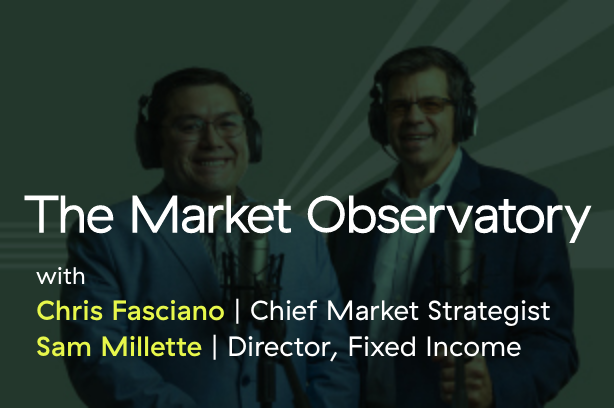Check out Brad’s recent interviews on Fox Business Network:
What will drive the markets higher, Thursday, March 6

March 12, 2014
Check out Brad’s recent interviews on Fox Business Network:
What will drive the markets higher, Thursday, March 6
One of the major topics of discussion about the stock market is whether we are in, or at least at the start of, a bubble. “Yes, look at the valuations!” cry some. “No, look at the valuations!” cry others. How could we tell?
The first thing we need is a definition of a bubble. The classic one is for values to increase well beyond what the fundamentals justify, but this runs into a problem with the terms “fundamentals” and “justify.” Wall Street (or any business, really) has a nasty habit of asserting, like Dr. Pangloss, that we live in the best of all possible worlds, and of inventing reasons why current prices, whatever they may be, are actually reasonable, if not cheap. So let’s sidestep that discussion.
March 10, 2014
Everyone loves a birthday. Jackson’s fifth birthday party last spring was at a candlepin bowling alley and pizza shop, and a wonderful time was had by all. This has nothing to do with the fact that we just reached the fifth anniversary of the start of the current bull market, but I like to remember it. Jackson, hopefully, will have an equally fun sixth birthday party (although Minecraft now seems to have replaced the Ninja Turtles), and the question is whether the current bull market will also make it to six.
At this point, there is no reason to believe that it won’t. The market trend continues strongly up, market expectations are strong, and retail investors are moving into the stock market. Recent pullbacks have ended quickly, with the market bouncing back to new highs.
We live in an instant-gratification society, especially if you are five years old. “But I need it now!” is a phrase I’m becoming increasingly familiar with as Jackson becomes ever more able to express himself. The substitution of “need” for “want” is a wrinkle that initially surprised me, but clearly it comes from parental questions about whether he really “needs” that new toy. The adventure continues.
I was thinking of this, now versus later and need versus want, in light of the recent employment data. I wrote yesterday about ”snowdown” versus slowdown, and today’s stats emphasize my points. Employment gains were up, despite a snowstorm in early February, and this time, the establishment survey did better than the household, narrowing that gap. The unemployment rate rose slightly because more people were looking for work, which is a good thing. The slowdown fears arose from an excessive focus on short-term data.
This has been a terrible winter—long and brutal, with lots of snow and gray days. I don’t do winter well, but I normally don’t break until around February, which means I only have to tough it out for a little longer. This year, I broke in December. It’s been a long January and February, and it looks like it may be a long March as well.
This is not to announce that I’m moving to Florida (although the subject has come up at home), but to provide some context for the slowdown we’ve seen in many of the economic statistics. Employment has been the worst hit, but retail sales, housing, and durable goods sales (cars) have also shown some damage. The question has been, as we looked at the data, whether this is an actual slowdown in the recovery, and potentially the prelude to a recession, or just a short-term dip caused by the weather.
Over the past couple of days, we’ve seen the market pop (on Friday), drop (on Monday), and pop again (yesterday). Admittedly, there was some news there—the Russian invasion of the Crimea over the weekend—but still, pop/drop/pop seems a bit strange.
I was talking with a reporter the other day who asked me a very reasonable question: “Is there a rational reason for all this activity?” He clearly didn’t think so, and while I certainly saw his point, I took the side of a rational market: given the Russian invasion, it clearly made sense to take risk off the table, and then (in theory) to move back in when it seemed the invasion was over. In the short term, you can make a reasonable case that the market response was rational.
March 4, 2014
The Ukraine crisis appears to be stalled for now, with Putin—having made his point and essentially occupied the Crimea—deciding to hold there, while the Europeans determine how to proceed. This is probably where we will be for some time, and the markets seem to concur, as they have bounced right back. Move along, nothing to see here.
I don’t necessarily think this story is over, but for the moment, let’s return to a longer-term issue that I discussed on Friday, the U.S. budget deficit. The Congressional Budget Office’s projections are below.
Over the weekend, as you no doubt have heard, Russia reportedly executed a military takeover of the Crimea region of Ukraine in response to last week’s pro-Western revolution. Markets are reacting this morning to the immediate fact of Russia’s action. As investors, we need to think about the context and likely outcome of the immediate situation before we respond.
First, let’s consider whether this is a short- or long-term action. For all the talk of bringing pressure on Russia to reverse the situation, the reality is that the West’s ability to exert any kind of meaningful pressure is limited or nonexistent. Without actually committing military force, we cannot effect change. Europe depends on Russian natural gas to heat its homes and operate its economy; Russia remains a major oil supplier to world markets. It’s impossible to cut Russia off economically, since Europe and world markets depend on it too greatly. From a military perspective, it’s the area’s strongest power. There’s no clear course of action for the West.
February 28, 2014
Add another to the list of “best since 2008” stats (although a better phrase might be “least worst since 2008”). The federal budget deficit for 2013 should come in around $680 billion, down from about $1.1 trillion in 2012.
As a citizen, I can’t help but applaud the drop. We are moving in the right direction. If we consider the deficit as a percentage of the economy as a whole, the improvement is even more substantial, since, in dollar terms, the economy has grown even as the deficit has shrunk. For 2013, the deficit is about 4.1 percent of the economy, down from more than 10 percent at the peak. In 2014, there’s a good chance it may shrink further, to a level below that of economic growth—which means the debt could actually start to shrink as a percentage of the economy. This is exactly where we need to be headed.

The information on this website is intended for informational/educational purposes only and should not be construed as investment advice, a solicitation, or a recommendation to buy or sell any security or investment product. Please contact your financial professional for more information specific to your situation.
Certain sections of this commentary contain forward-looking statements that are based on our reasonable expectations, estimates, projections, and assumptions. Forward-looking statements are not guarantees of future performance and involve certain risks and uncertainties, which are difficult to predict. Past performance is not indicative of future results. Diversification does not assure a profit or protect against loss in declining markets.
The S&P 500 Index is a broad-based measurement of changes in stock market conditions based on the average performance of 500 widely held common stocks. All indices are unmanaged and investors cannot invest directly in an index.
The MSCI EAFE (Europe, Australia, Far East) Index is a free float‐adjusted market capitalization index that is designed to measure the equity market performance of developed markets, excluding the U.S. and Canada. The MSCI EAFE Index consists of 21 developed market country indices.
One basis point (bp) is equal to 1/100th of 1 percent, or 0.01 percent.
The VIX (CBOE Volatility Index) measures the market’s expectation of 30-day volatility across a wide range of S&P 500 options.
The forward price-to-earnings (P/E) ratio divides the current share price of the index by its estimated future earnings.
Third-party links are provided to you as a courtesy. We make no representation as to the completeness or accuracy of information provided on these websites. Information on such sites, including third-party links contained within, should not be construed as an endorsement or adoption by Commonwealth of any kind. You should consult with a financial advisor regarding your specific situation.
Member FINRA, SIPC
Please review our Terms of Use.
Commonwealth Financial Network®